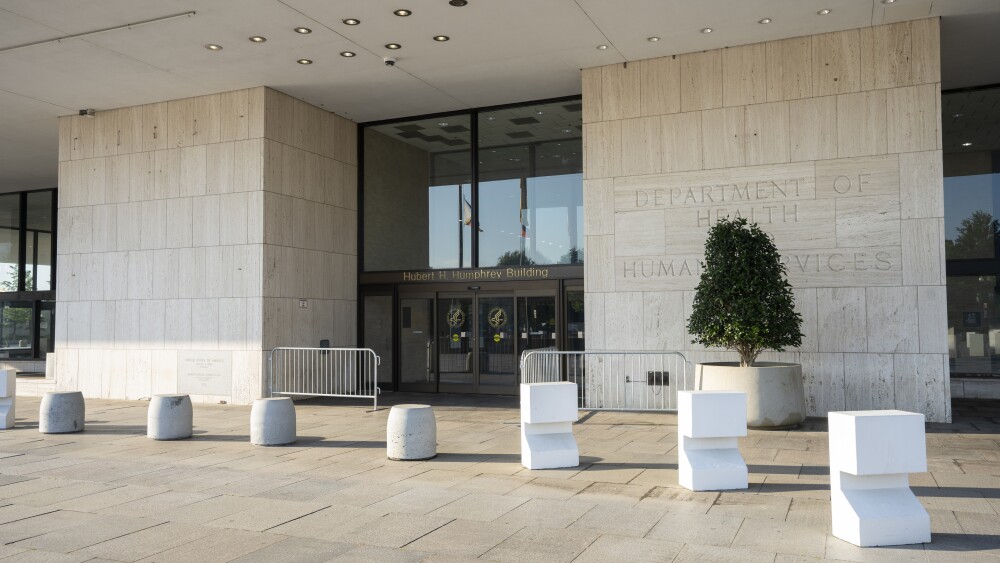Patents and intellectual property protections are a big deal in the biopharma industry. One reason is simply the timeline of drugs and therapeutics. Biopharma has several unique challenges, but one of them is the patent cliff.
Patents and intellectual property protections are a big deal in the biopharma industry. One reason is simply the timeline of drugs and therapeutics. Biopharma has several unique challenges, but one of them is the patent cliff. In an industry where only about one in 10 compounds actually makes it to market on average, those drugs aren’t able to stay on the market very long before their patents end and generic competition begins. Although this is a generally positive thing for consumers, it’s a major issue for big pharma companies.
Drug companies are in the innovation business. Part of the business model, particularly with limited patents causing a ticking clock to start as soon as the drug hits the market, is to develop new and better drugs. But they also use patents to protect their investment and prevent competition for as long as possible.
A recent Accenture report noted that in 2000, the average tenure for a market-leading treatment was 10.5 years, but in 2017 it was 5.1 years, a drop of 51%. Even though companies are working hard using patents to protect their products from generic or biosimilar competition, from a business perspective the end of patent protections can dramatically and negatively affect a company’s bottom line.
For example, Pfizer’s Lyrica (pregabalin) recently lost its patent protection. Nine companies, including InvAgen, quickly announced generic versions. Pfizer’s Lyrica brought in $5.4 billion for the 12-month period ending March 2019.
Small molecule oral brands, such as Lyrica, can easily lose at least 50% of sales during the first full year of generic competition. GlobalData projects that global sales of Lyrica will drop from $5 billion in 2018 to $950 million in 2024.
Another example of the importance of patents is the ongoing battle over who owns the patents for CRISPR gene editing. There have been numerous lawsuits and it never seems to be ending, although the largest decision appears to have been made in September 2018.
Broadly, CRISPR-Cas9 as a technology was discovered by University of California Berkeley professor Jennifer Doudna and Emmanuelle Charpentier of the Helmoltz Centre for Infection Research in Braunschweig, Germany.
Feng Zhang, a researcher at the MIT-Harvard Broad Institute, filed a broad U.S. patent claim on the technology. The patent battles have revolved around changes in U.S. patent law in the last few years. For a long time, it was “first to invent,” meaning that whoever was the first person to invent or discover a technology was the patent owner. They had to prove it, which creates its own hurdles. Then, in late 2011, the U.S. switched to “first-to-file,” and it went into effect on March 16, 2013. Various aspects of the patent litigation also include which particular settings the patents apply to—in mammalian eukaryotic cells as opposed to bacterial cells, in test tubes or in live animals, for example, and whether Zhang’s developments were obvious or not based on Doudna and Charpentier’s work.
In September 2018, it was a win for the Broad Institute of the Massachusetts Institute of Technology (MIT) and Harvard University, as a federal court of appeals ruled against the University of California (UC) on CRISPR patents. The Court of Appeals held that there was “no interference in fact” between the CRISPR patents the Broad Institute was awarded and CRISPR patents that the University of California had applied for. In 2017, three judges on the Patent Trial and Appeal Board (PTAB) made the ruling unanimously.
The court decision didn’t resolve all intellectual property arguments related to CRISPR, but it settled some. The Broad gets to keep its patents, of which the first was awarded in 2014, related to the CRISPR-Cas9 technology for eukaryotic cells Zhang invented. It also allowed the Broad’s numerous license holders, especially Editas Medicine, to relax a little bit.
STAT wrote at the time, “Since CRISPR Therapeutics licensed Charpentier’s invention (which is covered by the UC patent) and Intellia Therapeutics licensed Doudna’s, they now face a tougher but not impossible intellectual-property landscape.”
There are also pending lawsuits in Europe.
Which emphasizes the importance of patent protection in biopharma. Recently, the American Council on Science and Health interviewed Patrick Kilbride, senior vice president of the Global Innovation Policy Center at the U.S. Chamber of Commerce to discuss U.S. patents and the biopharma industry.
“The U.S. has been a leader in intellectual property because we have a strong framework to protect private property,” Kilbride said. “This ties in to our story of American ingenuity and inventiveness. We like to drive human progress. We are trying to spread these values to other countries.”
But, he noted, we’re in an era where many believe that “information wants to be free,” and there have been efforts and lawsuits to weaken IP rights.
“This is a challenge for biotech,” he noted, “because the industry requires a lot of capital, long lifespans, and is very risky. Therefore, biotech requires strong intellectual property rights.”
He further points out that innovation is not a single “a-ha” moment, but a series of innovations, and each step in that series should be protected by IP rights.
One of the issues the federal government and the public struggle with is how to balance drug innovation, which is extremely expensive and high risk, with costs to payers and the public. Kilbride notes that this also applies to the defense industry, where new weapons require large research-and-development costs.
“There’s a value chain of investment that results in a product,” Kilbride said. “There are also failures whose costs must be covered. These costs are not a total write-off; what was learned can be used in the development of the next product.”
However, it’s important to get new drugs on the market as fast and inexpensively as possible. One aspect of legislation over drug pricing and patent protections that often goes unreported is the need to decrease litigation.
Much of the IP problems, Kilbride said, occur at the international level. The Chamber of Commerce conducts research into global IP rights and creates an IP score for various countries, ranking them.
“The goal,” Kilbride said, “is to help countries empower their own entrepreneurs to invest in innovation and creativity. The strength of intellectual property law is correlated with better economic outcomes.”
What is often overlooked in media and political responses to drug pricing is the benefit the U.S. biopharma sector has on the U.S. economy in general. It directly employs more than 800,000 people, according to a 2017 industry report by TEConomy Partners for PhRMA, the industry trade group. It supports more than 4.7 million jobs across the country. And in 2015, the biopharma sector’s goods and services totaled more than $584 billion in the U.S., supporting another $735 billion via vendors and suppliers and through the economic activity of its workforce.
What that amounts to is $1.3 trillion in total economic output.
And intellectual property protections are a significant component of keeping that output churning along.





